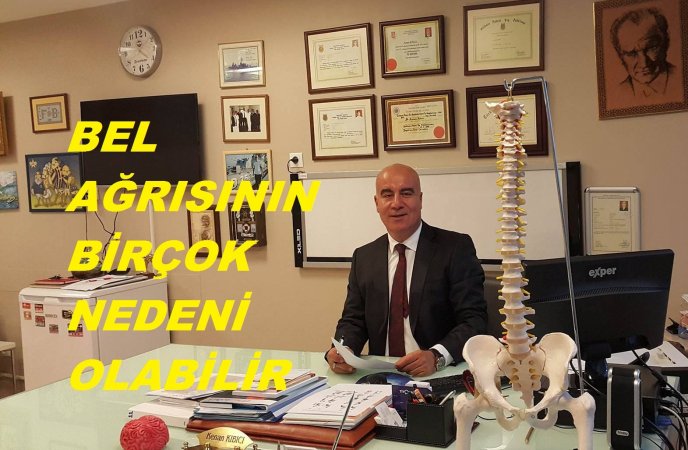
|
– Herniated disc is one of the most common causes of low back pain. You can also hear it among the people with names such as slipped back, slipped disc, spinal cord compression. REASONS OF lumbar hernia Genetic factors: In recent years, the idea that there may be a possible genetic disorder in patients with lumbar hernia has been seriously emphasized and some clues have been obtained in studies. TYPES OF WAIST HERNIA 1. Beginning lumbar hernia 1. Incipient Lumbar Hernia: The cartilage has not yet ruptured the surrounding capsule. Therefore, it puts pressure on the nerve like a balloon. The patient has only leg and lower back pain. During this period, the patient benefits from medication, rest or exercises. If the treatment in this period is not done properly, the hernia may progress. 2. Mid-Stage Hernia: The capsule around the cartilage between the vertebrae pushed further and overflowed into the spinal canal. This overflowing part enters under the nerve coming to the legs and puts pressure on the nerve and causes pain. At this stage, treatment and precautions are more important. 3. Advanced Stage Hernia: It broke the capsule around the cartilage between the vertebrae and went into the spinal canal. This displaced part enters under the nerve coming to the legs, puts pressure on the nerve and causes severe pain. At this stage, it is generally not possible to remove the cartilage piece that goes into the spinal canal with medication or manual therapy. We recommend microsurgery to our patients, especially if there is a loss of strength in their feet, without wasting time. DISC PROBLEMS SYMPTOMS OF WASTE HERNIA 4 out of every five people suffer from low back pain at some point in their life. Pain alone is not enough to say herniated disc. DIAGNOSIS OF HERNIA – History: The medical history provides the most important clues in diagnosis. Usually, there is a history of pain in the leg followed by more or less low back pain. Although the first symptoms are usually felt after an event such as heavy lifting, cases of sudden onset of low back pain and stiffness after long mornings are not uncommon without any obvious strain. MRI and EMG examinations may be required in terms of differential diagnosis and operation strategy in cases that do not respond to treatment, have frequent recurrences, and are decided to undergo surgery based on examination findings. |

